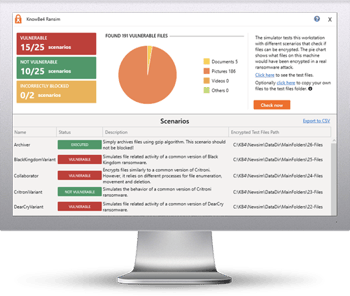1 in 3 IT Organizations Have no Cyberattack Incident Response Plan

Despite increases in ransomware attacks, ransom amounts and how often payments are made, new data shows organizations aren’t responding in kind and putting response plans in place.
As expected, we’re continuing to see data corroboration around the rise in ransomware attacks this year; according to GetApp’s 2021 Data Security Report, ransomware attacks have increased 25% over last year. And yet, the report found that 33% of organizations have no incident response plan, as well as 23% have no processes in place to report a cyberattack.
While I’m glad to see that a majority of organizations believe themselves to be somewhat ready, the GetApp data digs a bit deeper to help determine why the increases in ransomware attacks are occurring. According to the report:
- The percentage of users clicking links in phishing emails has risen nearly 14% over last year while the percentage of orgs experiencing phishing attacks remained relatively flat
- 60% of users admit to reusing the same password for multiple accounts
- Those admitting to reusing password were 7x more likely to experience a ransomware attack, 3x more likely to experience account takeover, and 3.1x more likely to click on a phishing link
In short, it’s your users that are the problem. These users a) don’t know how to spot a phishing email, b) aren’t concerned about their role in the organizations cybersecurity stance, or c) both. The only way to truly counteract this issue of user ignorance and apathy is to enroll them in online Security Awareness Training. This training reinforces the need for users to always be vigilant and to use good cyber hygiene practices.
With ransomware not looking like it’s going anywhere but up for the foreseeable future, it’s necessary to shore up the human aspect of your layered defenses; and Security Awareness Training is the means to do that.
Free Ransomware Simulator Tool
Threat actors are constantly coming out with new strains to evade detection. Is your network effective in blocking all of them when employees fall for social engineering attacks?
KnowBe4’s “RanSim” gives you a quick look at the effectiveness of your existing network protection. RanSim will simulate 22 ransomware infection scenarios and 1 cryptomining infection scenario and show you if a workstation is vulnerable.

Here’s how it works:
- 100% harmless simulation of real ransomware and cryptomining infections
- Does not use any of your own files
- Tests 21 types of infection scenarios
- Just download the install and run it
- Results in a few minutes!
PS: Don’t like to click on redirected buttons? Cut & Paste this link in your browser: https://info.knowbe4.com/ransomware-simulator-tool-partner?partnerid=001a000001lWEoJAAW

